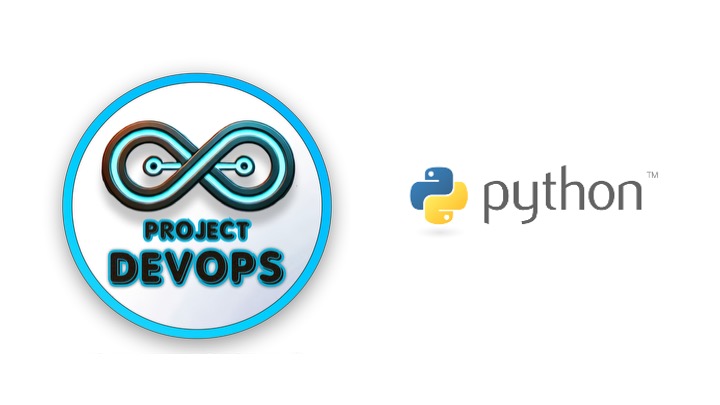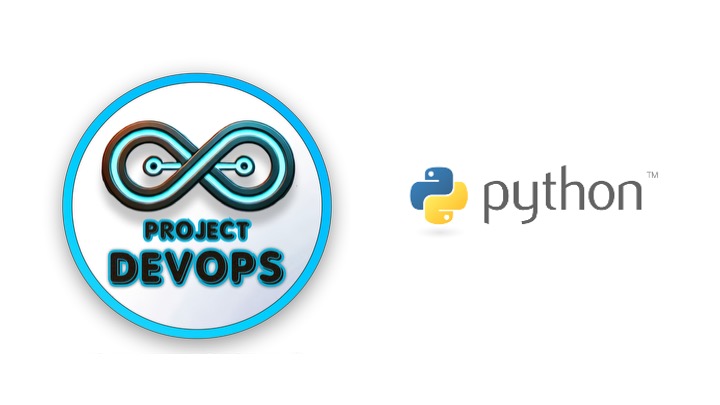Python’s Latest Versions (3.13 and 3.14) – What’s New and Why It Matters

Python continues to evolve at a rapid pace. In the last year the language moved from Python 3.13, released on October 7, 2024, to a series of maintenance releases culminating in Python 3.13.7 (August 14, 2025). Meanwhile, the Python team is preparing the final release of Python 3.14 (scheduled for October 7, 2025) with a release candidate (3.14.0rc3) already availablepython.org. This blog summarizes the most important changes in these versions, explains why they matter and demonstrates practical examples of new features.
Release cadence and support policy
An updated release schedule (PEP 602) now gives each major Python version two years of full support followed by three years of security fixesdocs.python.org. This means Python 3.13 will receive bug fixes until October 2026, and Python 3.14 will be maintained through October 2027. Python 3.14 is the final release to follow the annual cadence before more flexible schedules take effect.
Highlights of Python 3.13
Python 3.13 introduced improvements to the interpreter, concurrency, standard library and typing system. The following sections outline the most notable features.
A better interactive interpreter
The default REPL (Read‑Eval‑Print Loop) has been replaced with a more feature‑rich shell based on PyPy’s REPL. New capabilities include multiline editing with history, direct help, exit and quit commands, colorful prompts and tracebacks, interactive help browsing, and a paste mode for bulk codedocs.python.org. These enhancements make the interactive experience more similar to IPython without third‑party dependencies.
Improved error messages
Tracebacks now display in color by default, and the interpreter provides clearer hints when users accidentally shadow a standard‑library module with a script of the same namedocs.python.org. These refinements reduce debugging time for newcomers and experts alike.
Experimental free‑threaded CPython
Python 3.13 includes experimental support for running without the Global Interpreter Lock (GIL), an effort described by PEP 703. Although still optional, the free‑threaded build paves the way for true multi‑threading in Python. The work continues in Python 3.14, where free‑threaded Python becomes officially supported (PEP 779). Benchmarks show promising improvements at the cost of slightly higher memory usagepeps.python.org. This change could eventually transform concurrency in Python, allowing CPU‑bound threads to run in parallel.
Just‑In‑Time (JIT) compilation
PEP 744 added a basic JIT compiler to CPython. It is disabled by default in Python 3.13 but available for experimentationdocs.python.org. The JIT currently yields modest performance gains; developers should watch future releases as this technology matures.
Defined semantics for locals()
PEP 667 clarifies how updating the mapping returned by locals() affects local variables. Debuggers and IDEs can now reliably modify local variables even during optimized code executiondocs.python.org.
Standard library improvements
Several new functions and modules broaden Python’s capabilities:
PythonFinalizationError– raised when operations occur during interpreter finalizationdocs.python.org.
argparse deprecation support – command‑line options, positional arguments and subcommands can now be marked as deprecateddocs.python.org.
Z85 encoding/decoding – new base64.z85encode() and base64.z85decode() functions allow encoding data to and from the Z85 formatdocs.python.org.
copy.replace() – a high‑level helper that works like dataclasses.replace(), letting developers create modified copies of objects (including built‑in types)docs.python.org.
dbm.sqlite3 – SQLite now serves as the default backend for the dbm moduledocs.python.org.
Linux timer FD helpers – new functions in os make it easier to work with timer notification file descriptorsdocs.python.org.
Random CLI – the random module now offers a command‑line interfacedocs.python.org, enabling quick random number generation without writing a script.
Security defaults – ssl.create_default_context() enables strict certificate verification flags by defaultdocs.python.org.
Typing enhancements
Python 3.13 brings several improvements to static typing:
Default type parameters –
TypeVar,ParamSpecandTypeVarTuplecan now have default valuesdocs.python.org.
warnings.deprecated() decorator – PEP 702 introduces a decorator that marks functions or classes as deprecated, communicating deprecation both to static type checkers and at runtimedocs.python.org.
typing.ReadOnly – allows marking items in a TypedDict as read‑onlydocs.python.org.
typing.TypeIs – improves narrowing behavior for type guardsdocs.python.org.
Platform support and removals
Python 3.13 officially supports iOS and Android as tier‑3 platformsdocs.python.org, while wasm32‑wasi is promoted to tier 2 and wasm32‑emscripten is no longer supporteddocs.python.org. The release also removes nineteen obsolete “dead‑battery” modules (e.g., cgi, cgitb, imghdr, telnetlib) and the 2to3 tooldocs.python.org.
What’s coming in Python 3.14 (release candidate)
Python 3.14 is nearing its final release and introduces several new features and modules. Highlights include:
Official free‑threaded support
PEP 779 makes free‑threaded Python officially supported in 3.14. As a result, binary wheels built for release candidates will work for the final 3.14.0 releasepython.org. The transition means Python packages should start testing against the free‑threaded build to prepare for broader adoption.
Deferred evaluation of annotations
PEP 649 defers evaluation of type annotations until they are needed. This change resolves issues where annotations refer to classes defined later or create circular references. It also improves performance when annotations are not used.
Template string literals (t‑strings)
PEP 750 adds template string literals, written with a t prefix, which generalize f‑strings. A t‑string returns a Template object instead of a strpeps.python.org. Developers can then process the template and its interpolated values separately, enabling safe string generation (e.g., avoiding SQL injection) and custom domain‑specific languages. See the practical example below.
Multiple interpreters in the standard library
PEP 734 introduces support for multiple interpreters within the same process. This enables true isolation between Python interpreters without resorting to subprocesses, paving the way for more scalable multi‑tenant applications.
Standard library additions
Zstandard compression – a new
compression.zstdmodule provides access to the fast Zstandard compression algorithmpython.org.
Bracket‑less except/except* syntax – exception expressions may omit parentheses (PEP 758), simplifying pattern matchingpython.org.
Improved REPL and CLI color support – syntax highlighting is now built into PyREPL and standard library CLIspython.org.
External debugger interface – PEP 768 adds a zero‑overhead debugger API, enabling debuggers to attach to a running process without patching CPythonpython.org.
UUID versions 6–8 – the uuid module adds support for these new versions and accelerates generation of versions 3–5python.org.
Improved configuration API – an updated C API (PEP 741) makes it easier to configure Python for embedding and customizationpython.org.
Remote debugging – the pdb module gains support for attaching to running processespython.org.
Practical examples
To illustrate how some of these features can be used in practice, the following code snippets demonstrate new functionality. Note that these examples require Python 3.13 or 3.14 and will not run on earlier versions.
1. Safe string processing with template strings (t‑strings)
from string.templatelib import Template # new module introduced with PEP 750
# Define a template literal; note the t"..." prefix
user_name = "Alice"
html_template = t"<p>Hello, {user_name}!</p>"
# A hypothetical HTML processor function can safely escape interpolated values
# and build a structured object rather than plain text
from my_html_framework import html
safe_element = html(html_template)
print(safe_element) # would output a safe HTML element with proper escaping
In this example, html_template evaluates to a Template object, exposing its static strings and interpolated values separatelypeps.python.org. A custom processor such as html() can then escape the user_name value to prevent XSS attackspeps.python.org.
2. Marking deprecated APIs
from warnings import deprecated
@deprecated("Use new_function() instead", category=DeprecationWarning)
def old_function(x: int, y: int) -> int:
"""Add two numbers. Deprecated in favour of new_function."""
return x + y
# When calling the function, a DeprecationWarning is emitted
result = old_function(2, 3)
The warnings.deprecated() decorator (PEP 702) marks functions or classes as deprecated. Static type checkers can flag deprecated usage during development, and at runtime Python emits a DeprecationWarningdocs.python.org.
3. Z85 encoding and decoding
import base64
binary_data = b"\x00\x01\x02\x03some binary data"
encoded = base64.z85encode(binary_data)
print(encoded) # outputs an ASCII Z85 string
decoded = base64.z85decode(encoded)
assert decoded == binary_data
Python 3.13’s base64.z85encode() and base64.z85decode() functions allow encoding binary data using the [Z85 specification]docs.python.org. This format is more compact than Base64 and is useful for binary serialization and inter‑process communication.
4. Copying objects with modifications
from copy import replace
from dataclasses import dataclass
@dataclass
class Point:
x: int
y: int
p1 = Point(1, 2)
p2 = replace(p1, y=10) # create a modified copy
print(p2) # Point(x=1, y=10)
The new copy.replace() function works similarly to dataclasses.replace() but can also operate on various built‑in types and classes that implement __replace__()docs.python.org.
5. Using Zstandard compression
import compression.zstd as zstd
original = b"This is some text that we want to compress using Zstandard."
# Compress data
compressed = zstd.compress(original)
print(len(compressed), "bytes after compression")
# Decompress data
restored = zstd.decompress(compressed)
assert restored == original
Python 3.14’s new compression.zstd module provides native access to the Zstandard algorithmpython.org, which offers fast compression and decompression. This example demonstrates compressing and decompressing a byte string.
6. Generating UUID version 8
import uuid
# Generate a version‑8 UUID (new in 3.14)
u = uuid.uuid8()
print(u, u.version)
The uuid module now supports UUID versions 6–8 and improves performance when generating versions 3–5python.org. Version 8 UUIDs are random but conform to the latest UUID draft specification.
7. Running Python without the GIL
While truly free‑threaded Python is still experimental in 3.13 and optional in 3.14, developers can start testing their code under a GIL‑less environment:
# Build CPython with the --disable-gil configure flag
$ ./configure --disable-gil && make -j
$ ./python --version
Python 3.14.0 (free-threaded)
Free‑threaded Python enables concurrent threads to run Python bytecode in parallel, unlocking new levels of performance for multi‑core machinespeps.python.org. Developers should test their packages against this build and report issues.
Conclusion
The latest Python releases offer exciting improvements for developers. Python 3.13 brought a revamped REPL, better error messages, experimental free‑threading, a basic JIT, numerous standard‑library enhancements and richer typing features. Python 3.14, currently in release‑candidate stage, builds on this foundation with official free‑threaded support, deferred annotation evaluation, template string literals, multi‑interpreter support and more. Understanding these changes and experimenting with them now will help you prepare your codebases for the future of Python.
Whether you’re excited about improved concurrency, safer string processing or modernized libraries, there’s plenty to explore in these new versions. Keep an eye on the final Python 3.14 release on October 7, 2025 and join the community in shaping Python’s next chapter.
Comments (0)
No comments yet. Be the first to share your thoughts!
